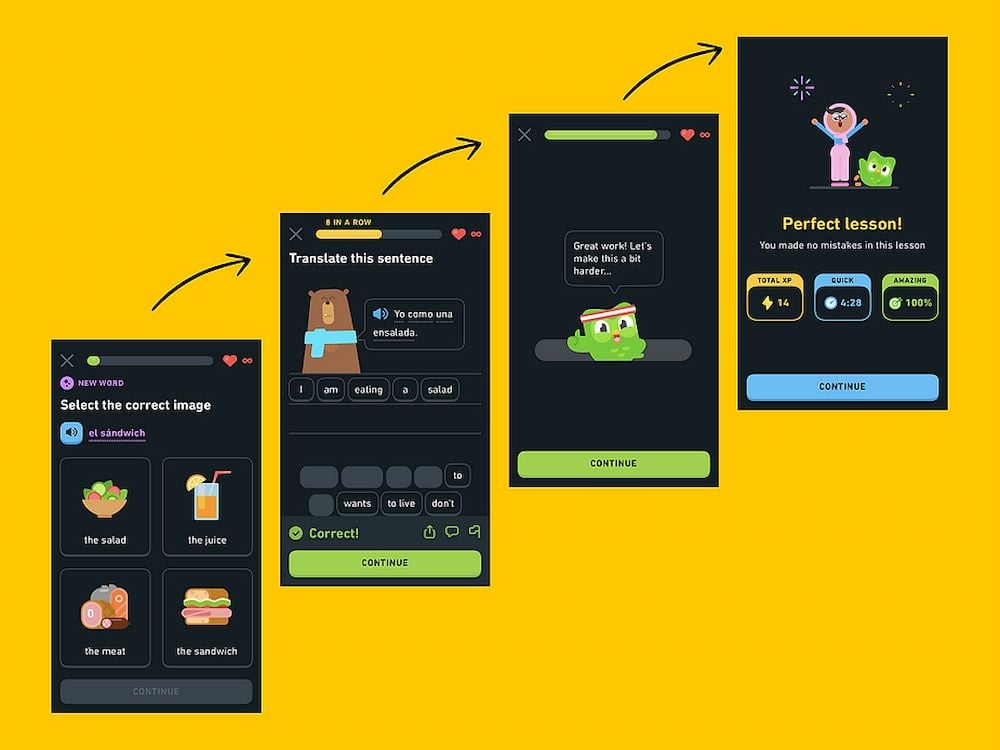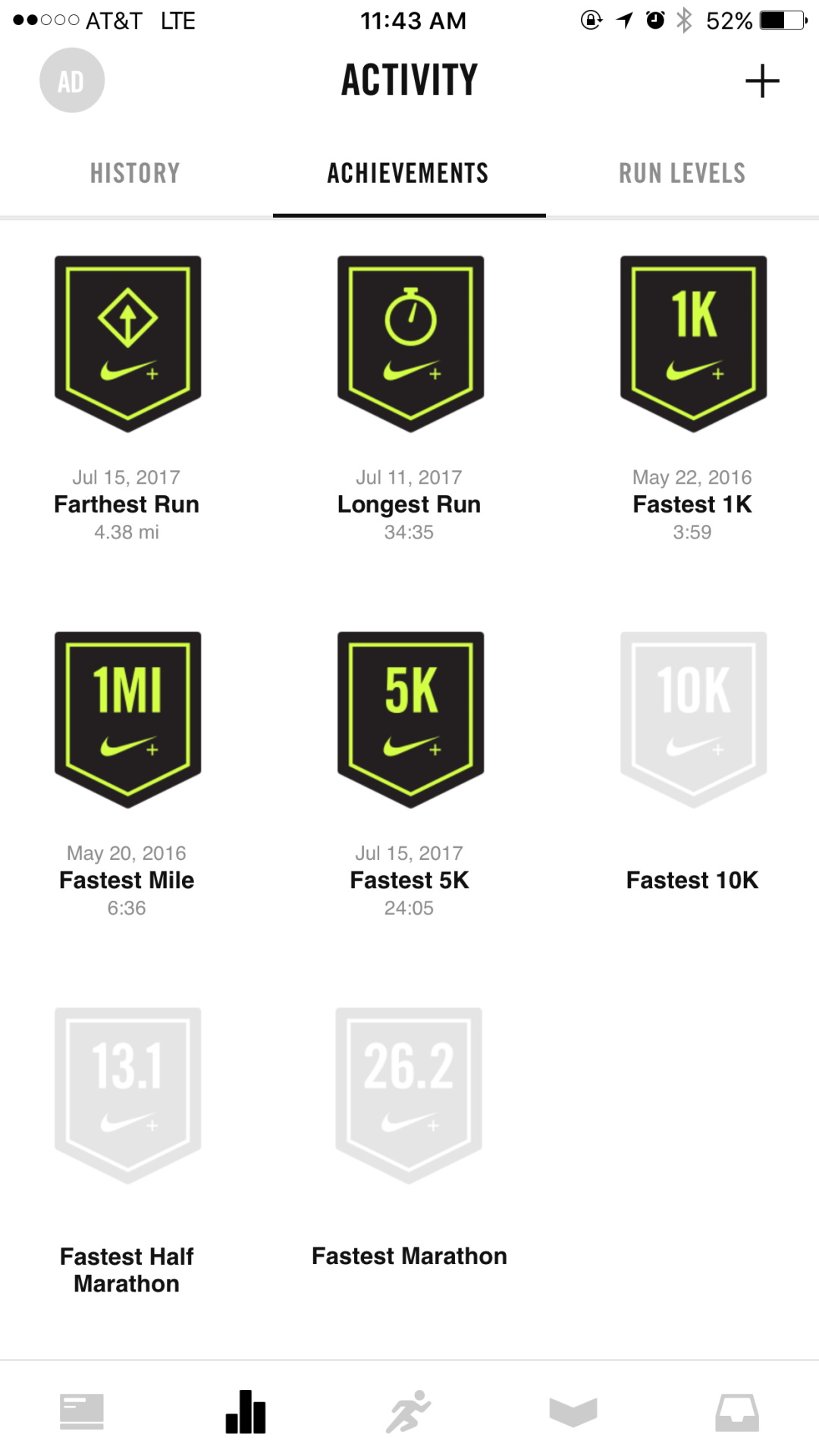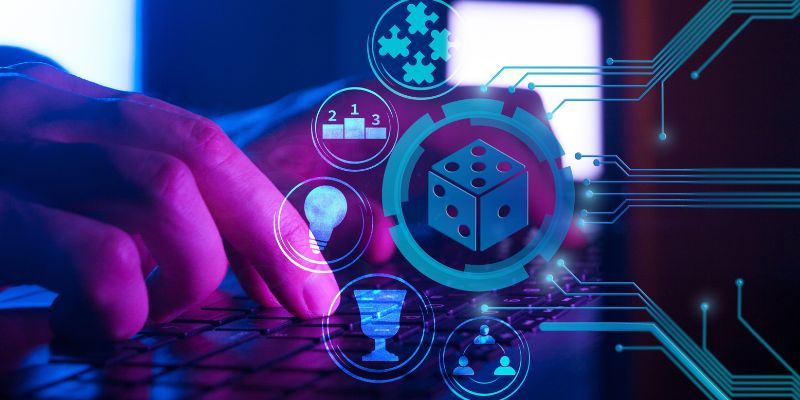In today’s rapidly evolving digital landscape, engaging and retaining users is more challenging than ever. Traditional methods of user engagement are becoming less effective, prompting businesses to explore innovative strategies. One such strategy is gamification—using game design elements in non-game contexts to drive user engagement and motivation. However, the advent of Artificial Intelligence (AI) and Machine Learning (ML) is revolutionizing gamification, making it more personalized, adaptive, and effective. This blog post explores how AI-driven gamification leverages ML to create personalized user experiences, enhancing engagement, satisfaction, and loyalty.
Understanding Gamification and Its Impact

What is Gamification?
Gamification involves incorporating game mechanics—such as points, badges, leaderboards, challenges, and rewards—into non-game environments like websites, applications, and online communities. The goal is to make these environments more engaging, motivating users to interact more frequently and deeply. For instance, a fitness app might use badges and leaderboards to encourage users to achieve their workout goals, or an educational platform might implement points and challenges to make learning more interactive and enjoyable.
The Benefits of Gamification
Gamification offers several benefits. Firstly, it enhances user engagement by making tasks more enjoyable, thereby increasing participation. When users are having fun, they are more likely to return and engage more deeply with the platform. Secondly, gamification increases motivation through rewards and recognition, which can drive desired behaviors such as completing a task, purchasing a product, or sharing content. Thirdly, it can improve learning outcomes by making educational content more interactive and engaging. Finally, gamification can drive behavioral change by making activities fun and rewarding, encouraging users to adopt new habits or behaviors.
However, the effectiveness of gamification largely depends on how well it is tailored to individual users. A one-size-fits-all approach often falls short, as different users have different preferences, motivations, and behaviors. This is where AI and ML come into play, enabling the creation of personalized gamification experiences that resonate with each user on an individual level.
The Role of AI and ML in Gamification
Personalization Through AI and ML
AI and ML enable gamification systems to analyze vast amounts of data and understand user preferences, behaviors, and motivations. By leveraging this data, these systems can create personalized gamification experiences tailored to each user’s unique profile. This involves several key components:
User Profiling: AI algorithms analyze user data to create detailed profiles, including preferences, behavior patterns, and engagement history. This allows the system to understand what motivates each user and what types of gamification elements are likely to be most effective.
Adaptive Challenges: ML models dynamically adjust the difficulty and nature of challenges based on user performance and feedback. This ensures that challenges remain engaging and appropriately challenging for each user, preventing boredom or frustration.
Personalized Rewards: AI-driven systems can determine which rewards are most motivating for individual users. For some users, a badge or virtual trophy might be highly motivating, while others might prefer tangible rewards such as discounts or exclusive content.
Predictive Analytics for Enhanced Engagement
Predictive analytics, powered by ML, allows gamification systems to anticipate user needs and behaviors. By predicting when users might lose interest or disengage, these systems can proactively introduce new challenges, rewards, or content to maintain engagement. This involves several key capabilities:
Churn Prediction: ML models can identify early signs of user disengagement, such as decreased activity or reduced interaction with certain features. This enables timely interventions to retain users, such as sending personalized messages or introducing new challenges.
Behavioral Predictions: AI can predict future user behaviors based on historical data. For example, it can anticipate which types of content or challenges are likely to be most engaging for a particular user, allowing for the creation of more relevant and effective gamification strategies.
Optimized Content Delivery: AI-driven systems can determine the optimal timing and format for delivering content and challenges. For instance, they might send notifications at times when users are most likely to be receptive, or adjust the format of challenges to better match user preferences.
Real-Time Feedback and Continuous Improvement
AI-driven gamification systems provide real-time feedback to users, enhancing their experience and keeping them engaged. Additionally, continuous monitoring and analysis allow these systems to improve and evolve, becoming more effective over time. This involves several key components:
Instant Feedback: Real-time feedback mechanisms, such as notifications and progress updates, keep users informed and motivated. For example, a fitness app might provide immediate feedback on workout performance, or an educational platform might offer instant feedback on quiz results.
Continuous Learning: ML models continuously learn from user interactions, refining gamification strategies to better meet user needs. This involves analyzing user data to identify trends and patterns, and adjusting gamification elements accordingly.
Dynamic Adjustments: AI enables the dynamic adjustment of gamification elements, ensuring they remain relevant and engaging. For example, challenges and rewards can be adjusted in real-time based on user performance and feedback, preventing boredom or frustration.
AI-Driven Gamification in Practice
Case Studies and Examples
Several companies have successfully implemented AI-driven gamification to enhance user engagement and satisfaction. Here are a few notable examples:
Duolingo:
 The language-learning app uses AI to personalize lessons and challenges based on individual user progress and performance. Gamified elements like streaks, points, and leaderboards keep users motivated and engaged. For instance, the app might adjust the difficulty of lessons based on user performance, or introduce new challenges to keep users motivated.
The language-learning app uses AI to personalize lessons and challenges based on individual user progress and performance. Gamified elements like streaks, points, and leaderboards keep users motivated and engaged. For instance, the app might adjust the difficulty of lessons based on user performance, or introduce new challenges to keep users motivated.
Nike Run Club:

 The fitness app leverages AI to create personalized workout plans and challenges. Gamification elements like badges, leaderboards, and social sharing features enhance user motivation and engagement. For example, the app might suggest personalized workout plans based on user fitness levels and goals, or introduce social challenges to encourage friendly competition.
The fitness app leverages AI to create personalized workout plans and challenges. Gamification elements like badges, leaderboards, and social sharing features enhance user motivation and engagement. For example, the app might suggest personalized workout plans based on user fitness levels and goals, or introduce social challenges to encourage friendly competition.
Fitbit:
 The health and fitness app uses AI to analyze user data and provide personalized activity goals and challenges. Gamification features like badges, virtual trophies, and social competition keep users motivated. For instance, the app might provide personalized activity goals based on user fitness levels and goals, or introduce social challenges to encourage friendly competition.
The health and fitness app uses AI to analyze user data and provide personalized activity goals and challenges. Gamification features like badges, virtual trophies, and social competition keep users motivated. For instance, the app might provide personalized activity goals based on user fitness levels and goals, or introduce social challenges to encourage friendly competition.
Gamification Service of SmartDev
At SmartDev, we understand the power of AI-driven gamification in transforming user experiences. Our gamification services leverage advanced AI and ML technologies to create highly personalized and engaging user experiences. Here’s how we do it:
User-Centric Design: We focus on understanding user behaviors, preferences, and motivations to design gamification systems that resonate with users. This involves analyzing user data to create detailed profiles, and designing gamification elements that are tailored to each user’s unique profile.
Adaptive Gamification: Our AI-driven systems dynamically adjust challenges and rewards based on user performance and feedback, ensuring continuous engagement. This involves using ML models to dynamically adjust the difficulty and nature of challenges, and determining which rewards are most motivating for each user.
Predictive Analytics: We use predictive analytics to anticipate user needs and behaviors, enabling proactive interventions to retain users. This involves using ML models to predict future user behaviors and identify early signs of disengagement, and proactively introducing new challenges, rewards, or content to maintain engagement.
Real-Time Feedback: Our systems provide real-time feedback to users, enhancing their experience and keeping them motivated. This involves using real-time feedback mechanisms to keep users informed and motivated, and continuously learning from user interactions to refine gamification strategies.
Continuous Improvement: We continuously monitor and analyze user interactions, refining our gamification strategies to better meet user needs. This involves analyzing user data to identify trends and patterns, and adjusting gamification elements accordingly.
The Future of AI-Driven Gamification

Emerging Trends and Technologies
The future of AI-driven gamification is bright, with several emerging trends and technologies poised to take it to the next level. Here are a few key trends to watch:
Augmented Reality (AR) and Virtual Reality (VR): AR and VR technologies are set to revolutionize gamification by creating immersive and interactive experiences. For instance, AR and VR can be used to create virtual environments where users can complete challenges and earn rewards, making gamification more engaging and enjoyable.
Natural Language Processing (NLP): NLP technologies are improving the way gamification systems understand and interact with users. For example, NLP can be used to create more natural and intuitive interactions, such as voice-based challenges and rewards.
Blockchain: Blockchain technologies are being used to create more secure and transparent gamification systems. For instance, blockchain can be used to create decentralized gamification systems where users can earn and trade rewards in a secure and transparent manner.
Challenges and Considerations

xr:d:DAFFJ8hC5Rg:198,j:33516759325,t:22082311
While AI-driven gamification offers significant benefits, there are also several challenges and considerations to keep in mind. Here are a few key challenges:
Data Privacy: AI-driven gamification systems rely on vast amounts of user data, raising concerns about data privacy and security. It’s important to ensure that user data is collected and used in a responsible and ethical manner, and that appropriate measures are in place to protect user privacy.
Bias and Fairness: AI and ML models can sometimes exhibit bias, leading to unfair or discriminatory outcomes. It’s important to ensure that gamification systems are designed and tested to be fair and unbiased, and that appropriate measures are in place to mitigate any potential biases.
User Trust: Trust is crucial for the success of AI-driven gamification systems. It’s important to ensure that users understand how their data is being used, and that appropriate measures are in place to protect user privacy and security.
Are you ready to transform your user engagement strategy with AI-driven gamification? At SmartDev, we offer cutting-edge gamification services tailored to your unique needs. Our team of experts is ready to help you leverage the power of AI and ML to create personalized and engaging user experiences.
Contact us today to learn more about our gamification services and how we can help you drive user engagement, satisfaction, and loyalty.







